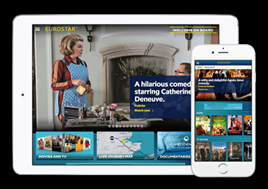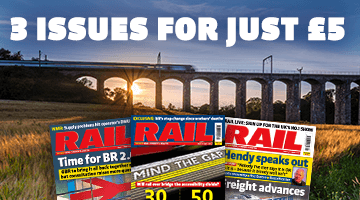Seaman explains that the app used by Virgin Trains is purely for entertainment, while the Eurostar system offers much more.
Tissot confirms that there is a fair use policy but it can be used for downloading files, which many TOCs don’t allow. Certain types of websites are blocked, such as those which might consume a lot of bandwidth, or those which are ‘inappropriate’ for viewing on trains.
Tissot compares the system to Netflix, and reckons it will be a ‘game-changer’ for the railway industry. He confirms that several TOCs have expressed an interest in the system. He also points out that the content can be tailored to the operator’s requirements. “For example, on commuter routes, we would cache the latest news on the trains’ media servers,” he says.
Seaman believes that this will offer something new to passengers. It brings rail travel more up to date and creates another reason to travel by train.
“My £4,000 season ticket doesn’t even know my name. TOCs need to start thinking about their digital strategies. This system knows more about the passengers than the operator does, but we also need to appreciate what we can do with that data. We’ve got some catching up to do.”
However, he’s optimistic about how the railways engage with its passengers through the internet. “Over the last couple of years we’ve noticed people from different backgrounds are being attracted to working in the rail industry. I have seen there is a change in the Chief Information Officers (CIO) joining companies. That the customer should come first has really become the focus, and that is permeating through the business.” He says that what passengers want has changed. “The world has moved on from ‘2-for-1’ deals. Connectivity is king.
“A few years ago, mobile operators had no interest in adding masts to cover railway tracks. Now, the likes of EE are investing in it. Orange has struck a deal with SNCF to provide high-quality coverage on France’s five main lines.”
Tissot believes that the rail industry is around five to ten years behind the aviation industry in terms of its entertainment and internet connectivity, and yet he says: “The UK is fairly advanced as a deregulated market.”
High Speed 2 will require high-quality connectivity - much of the route being built in Phase One, between London and Birmingham, will be in tunnels.
For cross-Channel trains, the Channel Tunnel has excellent reception. Tissot says: “There is 4G coverage there because there was a business case for it. Consequently, the investment was made and the necessary equipment installed. This was not done in the St Pancras tunnel.” It is thought that there was no business case for this.
“For HS2, you would have to invest in the tunnel,” says Tissot. “We would have to do it. Or perhaps a new technology will emerge that makes it more viable. But there will be no miracle solution.”
For the time being, Seaman says Eurostar leads the world in terms of its connectivity via the app. It has plans to do even more. One option could be live television, or ‘nearly live’ content, such as news.
The Eurostar brand is capitalising on these offerings. But in time, it will be commonplace across the UK’s rail network. Passengers are set for a step-change in the quality of their journeys.
















Login to comment
Comments
No comments have been made yet.